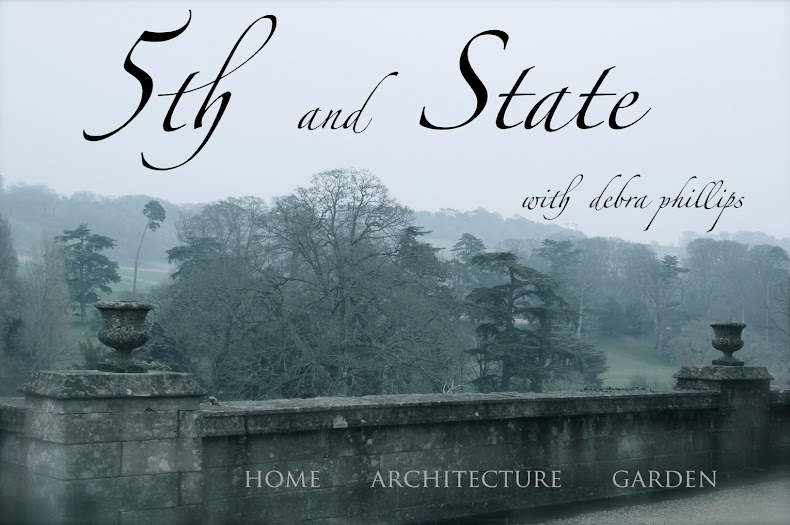In the continuation of our series, I want to guide you on honing in on your homes architectural elements and what plants and garden style will be compatible. Let's keep it easy and examine the same six plants for each. Our styles will be "Cottage/informal", Semi-formal, and Formal
The six plants will be, Boxwood, Hydrangeas, Roses, a Crab Apple Tree, Lavender, and Ornamental Grasses. OK, onto the first house...........
In this case study is a shingle styled home, think beach, cottage, Cape Cod, a bungalow........very informal. So using our six plants here, let's begin with boxwood;
No rows here but placed sporadically, they offer a sense of continuity without demanding attention. And importantly they offer winter interest. Have to honestly say one of my top favorite plants
Can't you just see it, spilling mounds, collected together for the perfect cottage scene.
Roses, climbing, entwining, intermingling. When I was studying in England I loved the concept of two vines are better than one. You would see a glorious climber like this one above clambering towards the sun while in a deep passionate "hug" with a morning glory vine.......can't you just picture that?
Ornamental Crabs or fruit bearing apple trees would be best as 'one with the garden' with a mosaic inspired plant cluster at it's feet
Source: ih2.redbubble.net via Debra on Pinterest
Does it get any better than this? What better garden than a cottage garden? The sun, the fragrance, the sound of bumble bees (they will never hurt you unless you attack)
This is a style that is compatible with almost any architecture. It's the middle of the road, the perfect blend of formal and informal. Let's study the use of our six plants within this framework. Our chosen house is a classic American farmhouse with an asymmetrical design
The boxwood here has become a more prominent player containing the riotous color and free-flowering nature of the perennials
This layout has a touch of formality however the loose structure of the hydrangeas again relaxes the structured layout of the boxwoodRoses, framing a door but look again at it's partner, yes boxwood. This composition is the classic middle of the road style.
TIP: Want to surround your door or window in roses without a trellis? Easy, put globs of clear bathroom silicone caulk just where you want the stem. While wet, insert a garden twisty tie encasing it entirely in the caulk, allow to dry, repeat every 12". When thoroughly dry add your stalk, twist and go to the next one.Want to remove the caulk ever? Again easy, slip a screw driver under it and pop them off.
Diminutive crab apples, a favorite is 'Lollipop'. This placement can be formal which is expected in this style, but to a degree. The looseness of the hydrangeas tones down the symmetry
A free formed plant such as the lavender above can single-handedly pull together the desired style when planted in a straight line
Can you see it here? Where is the formality? In the strong rectangle of ornamental grasses which is inherently informal but teamed with the giant allium......Viola!
Formal
And in this case French architecture. To me, there are two types of French homes; the formal as above and the French country rustic, which could go with any of the styled gardens previously mentioned. This could also be an English home, Tudor, Greek Revival, ............
This is what we think of as formal boxwood; severely pruned into a pattern, and here lining the walkway with a boxwood sentinel flanking the entrances
Trees in a topiary form is pure formal. How is this for the use of Hydrangea?!
Ahhhhh, yes! Are we in Versailles? This is a la Claude Monet, the alee of roses on multiple trellis forms creating the long view of lusciousness! The supporting cast of boxwood and a pea gravel path, define the style.
The perfect crab or fruit bearing apple is the 'espalier', (s pal yeah) creates a living fence, a tight formation of simple and elegant manipulation
Remember the haphazard layout of the lavender in the cottage style? This is anything but. Patterned gardens are particularly lovely viewed from above.
Did you ever think there was such a beautiful way to formalize ornamental grasses? This is the best example I have ever seen
So to recap, hone in on the architecture and the complimentary landscape style. And "see" your chosen plants in a form that fits in with your scheme. Did this help you? Do you feel better informed when visiting the garden center? Any questions? Yes I used to teach landscape design and am used to asking at the end, "any questions?" But I am serious, ask away!
Next in the series: choosing the "floor" of the garden. Wishing everyone a lovely weekend and as always, thank you for visiting!
xo
Debra





I really appreciate the kind of topics you post here. Thanks for sharing us a great information that is actually helpful. Good day!
ReplyDeletegarden landscapers london